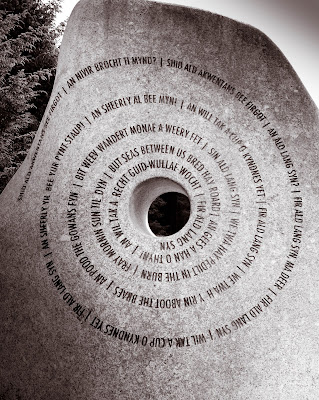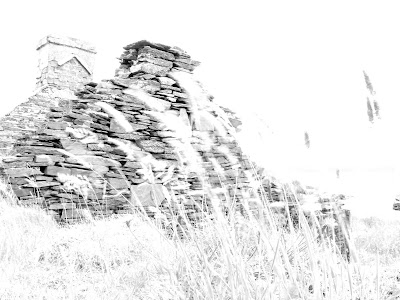
Spread out a map of southern Scotland, and you’ll notice something quite subtle, but amazing. You might not see it straight away, but gaze at it with your eyes half closed, you’ll begin to see a dizzying number of cairns, standing stones and cup and ring marked rocks. These sentinel reminders of life thousands of years ago weave into a vast landscape of time, ritual upon ritual, eclipse on eclipse. In some ways, we have such a better grasp of space than we do of the expanse of time. But maybe in places like this, they become intertwined.
No where is this clearer than in the prehistoric landscape around Kilmartin at the end of Loch Awe. The terrain here is fairly typical of southern Scotland-hellishly lumpy and scrubby, yet fertile. What sets this place apart is that here, burial sites, astronomically arranged standing stones and circles are spread over the valley floor. Laid out in a vast sacred space, the effect today is dramatic and evocative. This landscape is probably no more special than any other in the area, but having lain under a protective layer of peat for hundreds of years until the 1800’s, the preservation is exceptional.
From Kilmartin, the glen spreads out like a heavy carpet, rucked here and there by ancient hill forts like Dunadd, the ancient capital of the kingdom of Dalriada. A landscape where time is as important as space.

Over the years, we've drifted out of the kayaks into lochside church grounds, and almost by accident found an uncanny number of ancient, beautiful carved stone grave slabs. These at Kilmartin church are some of the oldest in Scotland. Walking into the simple stone building was to feel a strong sense of gravity.
 Later, I went for a run past cup and ring-marked stone slabs, their edges fringed with lurid green moss. Beyond, I turned right onto a singletrack mountainbike trail, then side-stepped back onto forestry roads. More track junctions came and went, and by this time I was turning mostly at random. On the right was a steep hillside recently felled of trees. In this wasteland there was a steep, rutted path roughly cut out with a digger and I took it. By the time I got to the top of the hill, it was about time to turn back. But as I did so, something caught my eye. About 30 metres away, a pointed gable end of a grey rock bent out of the wasted stubble.
Later, I went for a run past cup and ring-marked stone slabs, their edges fringed with lurid green moss. Beyond, I turned right onto a singletrack mountainbike trail, then side-stepped back onto forestry roads. More track junctions came and went, and by this time I was turning mostly at random. On the right was a steep hillside recently felled of trees. In this wasteland there was a steep, rutted path roughly cut out with a digger and I took it. By the time I got to the top of the hill, it was about time to turn back. But as I did so, something caught my eye. About 30 metres away, a pointed gable end of a grey rock bent out of the wasted stubble. I had stumbled upon another ancient site. It was part of a stone circle, surrounding a solitary chambered cairn, floating in a sea of flayed ground.
There's probably no magic or mystery to this. But maybe, just under the surface, there is a thin line that leads us.






























